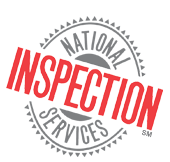The Hazards of Electromagnetic Radiation
Overhead power lines. Hair dryers. Electric blankets. What’s got everyone so worked up about these seemingly innocuous modern conveniences?
Electromagnetic radiation, that’s what. Produced naturally by the earth and technologically by man, electromagnetic radiation is everywhere around us–and always has been. Even prehistoric man was exposed to the earth’s natural magnetic field. But the dawn of the Industrial Age brought hundreds of new sources of electromagnetic radiation into our homes.
And therein lies the problem.
Electromagnetic radiation is produced in frequencies that range from high to extremely low. High frequency waves, such as X-rays, have long been associated with health problems given sufficient doses and exposures. But middle frequency waves, such as microwaves, and low frequency waves, such as television waves, have not been shown to be harmful.
Dangerous ELFs
Only recently, however, has the baby of the family–extremely low frequency waves, or ELFs–begun receiving attention. ELFs are emitted from the most ubiquitous of sources: power lines, house wiring and household appliances.
Hundreds of public and private studies on the health risks of ELF waves have yielded conflicting results. While it is still too early to state definitively whether or not they cause health problems, many researchers agree that ELF exposure may be associated with:
- slowed heart rates and altered brain waves.
- changes in the immune, circulatory and psychological systems.
birth defects and miscarriages. - cancer, particularly leukemia and brain cancer.
These health risks sound ominous, but most scientists do not yet believe there is cause for great concern. For example, certain epidemiological studies have reported slightly increased cancer risks–1.5 to 2 times higher–for people exposed to higher ELF levels than the general population. For childhood leukemia, which affects one in 14,000 children per year, ELF exposure may raise the risk to two children in 14,000.
Still, some researchers and consumer advocates do think ELF waves pose a grave health threat and are lobbying for preventive measures. While the debate will likely go on for years, there are some simple, logical steps you can take to limit your ELF exposure.
Prudent Avoidance
The easiest way to ensure you won’t be harmed by ELFs is to limit your exposure to them. Authorities are calling this “prudent avoidance)–reducing human exposure to to electromagnetic fields when it can be done easily and cheaply.
Here are a few examples:
- Don’t stand near your electric oven or microwave while it’s running. ELF wave levels drop off rapidly with distance.
- Don’t sit too near your television.
- Sit at arm’s length from your computer screen. Avoid sitting next to your printer, too, and try to sit no closer than 4 feet from the sides or backs of your coworkers’ computers. (Note: magnetic fields go right through walls, so partitions don’t help.)
- Hair dryers create very high ELF levels, so consider using yours less frequently.
- Motor-driven electric clocks produce higher ELF levels than other kinds of clocks. If you have such a clock at your bedside, consider placing it away from the bed or buying a newer digital or wind-up clock. Ditto for fans and answering machines.
- Don’t run your electric blanket or water bed heater all night long. Instead, use these devices to warm your bed before you go to sleep them shut them off once you’re in bed.
- If you are buying a new home, consider the location of electrical distribution and transmission lines.
- Have your home and yard tested. Reputable home inspection companies use electronic gaussmeters (a gauss is the unit of measurement for magnetic fields) that produce fast and relatively inexpensive results. The inspection will help you identify lihot spots” in your home. However, it is important to note that there are no published, official standards for what constitutes safe or unsafe ELF wave exposure levels.
- Perhaps most important, get informed. Read the latest magazine articles and books on this controversial topic. Contact the Department of Energy or the Environmental Protection Agency (the EPA) for more information. Then decide for yourself whether you need to be concerned and what you can do to protect yourself, your family and your community.
